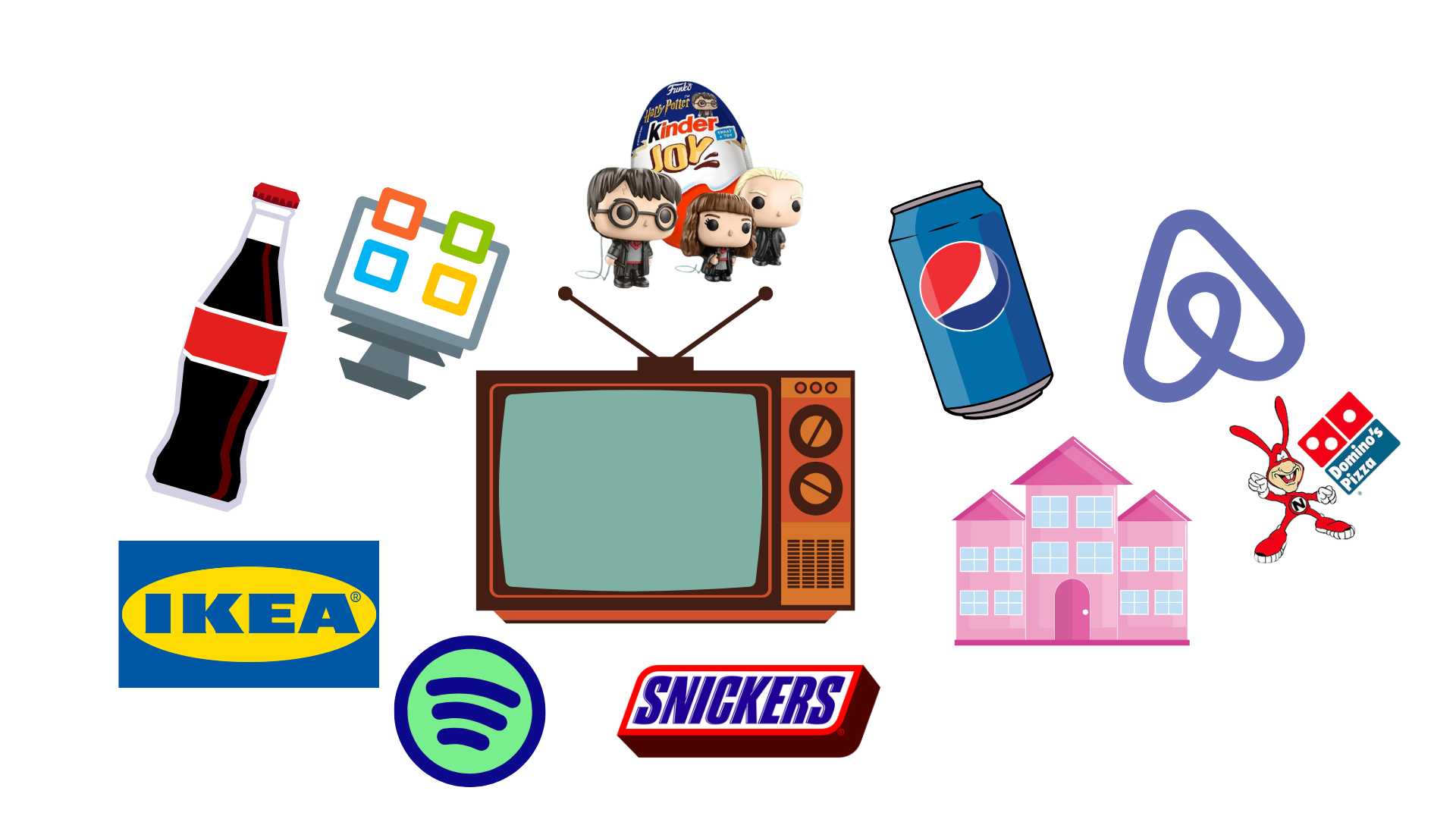Why does nostalgia resonate so strongly with audiences?
And how can marketers effectively leverage this powerful emotion in their digital campaigns?
In this post, we explore the psychology behind nostalgia’s appeal and examine real-world examples of its successful application.
We asked digital marketing and business leaders to share recent campaigns that caught their attention due to their effective use of nostalgia.
They also dissect the strategic elements that made these campaigns resonate, providing valuable insights into why certain approaches work and how marketers can harness the power of the past to create impactful campaigns today.
Read on!
Coca-Cola's Nostalgic 'Share a Coke' Revival
A digital campaign that really stood out to me for its use of nostalgia was Coca-Cola’s ‘Share a Coke’ revival in 2024.
It wasn’t just the familiar bottle with someone’s name on it; they took it a step further by weaving in iconic pop culture references from the 90s and early 2000s: TV shows, music, the whole vibe that made that era feel so special. It evoked a nostalgic journey, infused with a contemporary twist that breathed new life into the past.
The combination of personalization and emotional connection was what truly resonated. By tapping into names and moments that were beloved by so many, Coca-Cola didn’t just sell a drink: they offered a little piece of nostalgia.
The beauty of it was how effortlessly they made it personal for everyone. People weren’t just grabbing a Coke; they were reconnecting with a moment in time that brought joy and simplicity.
And then there was the social media strategy, which was genius. It didn’t just rely on people enjoying a product; it gave them something to share, something that made them feel good and connected.
People found their names or nostalgic references on bottles and couldn’t help but show them off to their friends. It became a cultural moment: something we wanted to experience and share together.
It was more than just clever marketing; it was an invitation to relive the past, even if just for a moment.
Coca-Cola didn’t just sell a product; they made you feel like part of a story. And that’s what made it truly powerful.

Peter Wootton
SEO Consultant, The SEO Consultant Agency
IKEA's Clever Use of Viral Trends
IKEA Sweden’s recent campaign promoting their new rewards program was a masterclass in leveraging nostalgia.
Recognizing they were late to the party with loyalty points, IKEA tapped into past viral trends like the Harlem Shake, Bottle Flip, and Mannequin Challenge to reintroduce these cultural phenomena in a fresh and clever way.
What made this campaign impactful for me was how it turned the familiarity of these trends into something unexpected and refreshing. It reminded me of how fun these moments were in their heyday, but even more so how delightful it was to see them revived years later in a way that felt lighthearted and unsaturated in the current online landscape.
IKEA managed to make a simple message about rewards points genuinely entertaining by tapping into shared cultural memories while putting a quirky, brand-relevant spin on them.

Ryan Stone
Founder & Creative Director, Lambda Video Production Company
Lego's Barbie DreamHouse Hits Nostalgia
Lego’s Barbie DreamHouse campaign nailed it.
They recreated the iconic 90s TV ad shot-for-shot but with Lego minifigs. Smart because it hit two nostalgia points – original Barbie fans and Lego collectors. Strategy worked because they committed fully – same jingle, same camera angles, even the grainy VHS quality.
The genius part? Instead of just banking on nostalgia, they used it to showcase new features.
Engagement was 4x their regular posts because people shared both the original and new versions side by side.

Tim Hanson
Chief Creative Officer, Penfriend
Airbnb's Vintage Travel Posters Campaign
The campaign featured ads with a retro aesthetic and included images of vintage travel posters, old-school cameras, and classic cars. The campaign aimed to tap into the nostalgia of past travel experiences and inspire people to explore new destinations like a local.
Instead of just promoting their services, Airbnb used storytelling techniques to create an emotional connection with their audience.
The ads showcased personal stories and experiences of hosts and travelers, making the brand more relatable and trustworthy.
The use of nostalgic visuals in the campaign not only caught my attention but also evoked a sense of familiarity and warmth. It reminded me of my own past travel memories and made me want to create new ones using Airbnb’s services.
The campaign was strategically promoted on social media platforms, where many people often share their travel experiences.
This helped the campaign reach a wider audience and also encouraged user-generated content, further enhancing the nostalgia factor.
Microsoft's 'Windows 11: Start Me Up'
One recent digital marketing campaign that really nailed nostalgia was Microsoft’s “Windows 11: Start Me Up” campaign. They brought back the iconic “Start Me Up” song from their Windows 95 launch while showcasing the modern features of Windows 11.
What made this so impactful was how they tapped into the collective memory of an entire generation that grew up with early versions of Windows.
It wasn’t just about the product-it was about rekindling that sense of familiarity and comfort while tying it to a brand-new experience. It bridged the past and the future perfectly.
What stood out was how they used nostalgia strategically-not just as a gimmick, but as a way to make something new feel approachable and emotionally resonant.
The key elements here were the familiar audio cue (the song) and subtle visuals like the revamped Start menu, which sparked memories but still looked fresh and modern.
It wasn’t overwhelming or overly sentimental-it was just the right amount of a throwback to connect with users who grew up with Windows while still appealing to new audiences.
The real takeaway from this campaign is how powerful nostalgia can be when paired with relevance. It’s not about making people feel stuck in the past; it’s about using those feelings to highlight progress and create an emotional connection.
If you’re planning a nostalgic campaign, think about what part of your brand’s history resonates most with your audience and how you can reframe it to align with what they care about today. That’s the magic formula.

Priyanka Prajapati
Digital Marketer, BrainSpate
Pepsi's 'The Pepsi 90s Show' Initiative
One recent digital marketing campaign that caught my attention was Pepsi’s “The Pepsi 90s Show” initiative, which leveraged nostalgia to connect with audiences who grew up in that era.
The campaign tapped into iconic 90s imagery, pop culture references, and even brought back retro Pepsi packaging.
It wasn’t just about aesthetics, though; the campaign strategically targeted millennials by intertwining memories of their formative years with moments of indulgence and fun.
What made it impactful was the multi-platform approach, including a strong presence on TikTok, influencer partnerships, and a limited-edition product line that people could physically buy, touch, and share online.
It wasn’t just a walk down memory lane; it was an interactive experience that sparked emotional engagement while still aligning perfectly with the brand’s core values of excitement and youthfulness.
Having spent decades working with businesses across three continents, my experience allows me to recognize the brilliance of such a campaign immediately. Nostalgia can be a goldmine for brands, but only when executed with precision.
What Pepsi nailed here was the balance between emotional resonance and modern relevance.
From my experience helping businesses increase profitability and audience engagement, I know that nostalgia-based strategies only work if they’re paired with innovative touchpoints like social media challenges or exclusive product releases.
These ensure that the campaign doesn’t just rekindle memories but also drives action, whether that’s purchases, shares, or user-generated content.
The key takeaway is this: nostalgia needs to make people feel something, but it also needs to compel them to act—and that’s exactly what this campaign did.
Domino's Revives 'The Noid' Character
I like the return of Domino’s ‘The Noid’ character.
They revived this ’80s mascot in a modern ad campaign, weaving him into a storyline where he wreaks havoc on modern delivery tech like self-driving vehicles.
It balanced throwback humor with current innovation, making older fans smile and hooking new audiences with the quirky antics.

Ben Grimwade
Software Engineering Manager, Just Another Tech Lead
Kinder's Genius Harry Potter Marketing Campaign
One recent digital marketing campaign that effectively leveraged nostalgia was the “Kinder’s Genius Harry Potter Marketing Campaign.”
The Kinder Harry Potter marketing campaign stands out as a masterful example of nostalgia-driven engagement. By partnering with the beloved wizarding world franchise, Kinder created a multi-layered experience that resonated deeply with diverse audiences.
The campaign’s strength lay in its thoughtful integration of physical and digital elements.
Limited-edition chocolate products featuring collectible Harry Potter-themed toys sparked excitement among both young discoverers and longtime fans.
The clever addition of augmented reality experiences through QR codes on packaging transformed simple chocolate treats into magical moments, encouraging repeated brand interactions.
What made this campaign particularly impactful was its understanding of cross-generational appeal.
Parents who grew up with Harry Potter could share their love for the series with their children through these products, creating new shared memories while revisiting their own nostalgic connections.
This dual-targeting strategy effectively expanded Kinder’s market reach while deepening emotional bonds with the brand.
The campaign’s retail execution enhanced its impact through themed store displays that turned everyday shopping into immersive experiences.
Meanwhile, the social media component encouraged fans to share their collections and AR experiences, creating organic buzz and community engagement around the brand.
The success of this initiative came from its ability to blend beloved cultural elements with modern technology while maintaining authenticity. Rather than simply slapping Harry Potter branding on products, Kinder created an experience that honored the magical spirit of the franchise while adding genuine value to their product offering.
By combining collectibility, interactive technology, and emotional storytelling, Kinder demonstrated how nostalgia marketing can create meaningful connections when executed with genuine understanding of both the source material and target audience.
The campaign showed that successful nostalgia marketing isn’t just about reminding people of the past – it’s about creating new experiences that honor those memories while engaging current interests.

Kishan Soni
SAAS SEO Specialist, Dreamcast
Snickers' Pop Culture References in Ads
The “You’re Not You When You’re Hungry” campaign by Snickers caught my attention for successfully leveraging nostalgia by incorporating classic pop culture references into its digital ads.
By featuring well-known personalities from past decades, such as iconic actors or characters, the campaign appealed to both older audiences who recognized the references and younger viewers intrigued by the humor.
What made it impactful was its ability to tie nostalgia directly to the brand message.
The ads seamlessly integrated these references into the tagline, reinforcing brand identity while evoking emotional connections.
Additionally, the campaign’s use of social media polls and interactive content allowed audiences to engage with the nostalgic theme, further boosting its reach and relatability.
Nostalgia works when it’s authentically tied to your brand message and engages multiple generations through cultural touchpoints and interactive elements that invite participation.

Slavko Kovacevic
Head of SEO, PR Link Engine
Spotify's Personalized 'Wrapped' Campaign
One digital marketing campaign that caught my attention was Spotify’s ‘Wrapped’ campaign.
Each year, Spotify sends users a personalized review of their listening habits, highlighting their top songs, artists, and genres. It’s a campaign that taps into nostalgia in a way that feels personal and engaging, even for someone like me, who wasn’t around when some of the older music hits were initially released.
What makes ‘Wrapped’ so successful is its ability to blend nostalgia with personal data in a compelling, fun way.
It doesn’t just bring back memories of songs from the past; it reminds you of the moments when those songs were significant to you, whether you were listening to them during a road trip or at a particular point in your life.
Even for someone like me, Spotify manages to create a sense of nostalgia by connecting me with the music and artists I’ve discovered over time.
Spotify also does a brilliant job of using social media to amplify the campaign, encouraging users to share their results.
This amplifies the nostalgic factor, as people get to compare their music tastes with friends, rekindling shared memories of musical eras. They’ve created an experience that’s fun, shareable, and emotionally resonant.
What really stands out about this campaign is how it makes people feel seen. It’s not about simply looking back at the past, but using those memories to highlight how music continues to shape our lives.
By blending nostalgia with personalization, Spotify has turned ‘Wrapped’ into an annual tradition that users eagerly anticipate. It shows that nostalgia, when paired with technology, doesn’t have to just be a look back; it can be a way of reflecting on how far we’ve come.

Martynas Siuraitis
SEO Consultant, The SEO Consultant Agency
On behalf of the BoostMyDomain community of readers, we thank these leaders and experts for taking the time to share valuable insights that stem from years of experience and in-depth expertise in their respective niches.
BoostMyDomain invites you to share your insights and contribute to our authoritative publication. Reach a wider audience, build your credibility, and establish yourself as a thought leader in an industry that caters to every business with an online presence!


